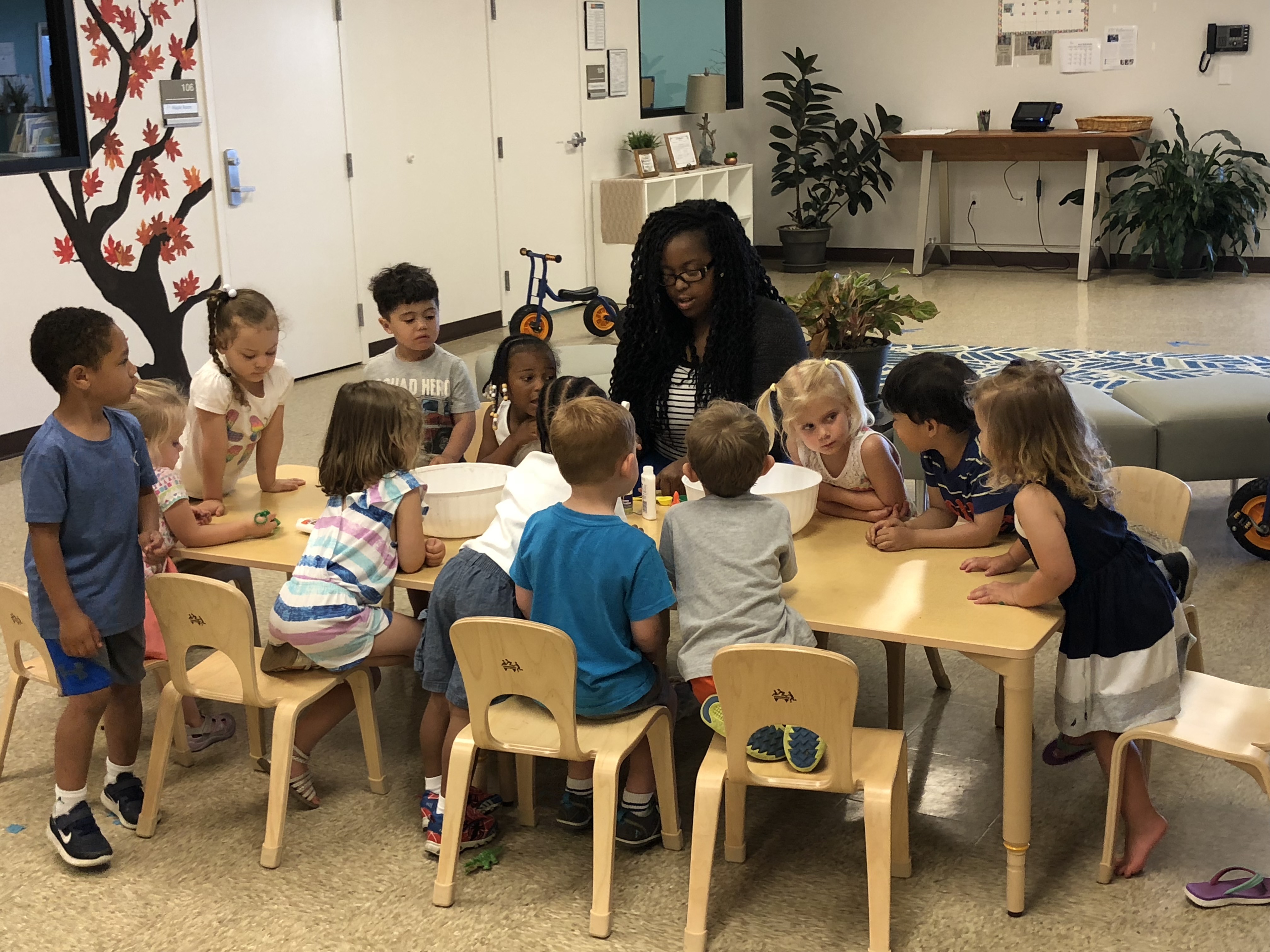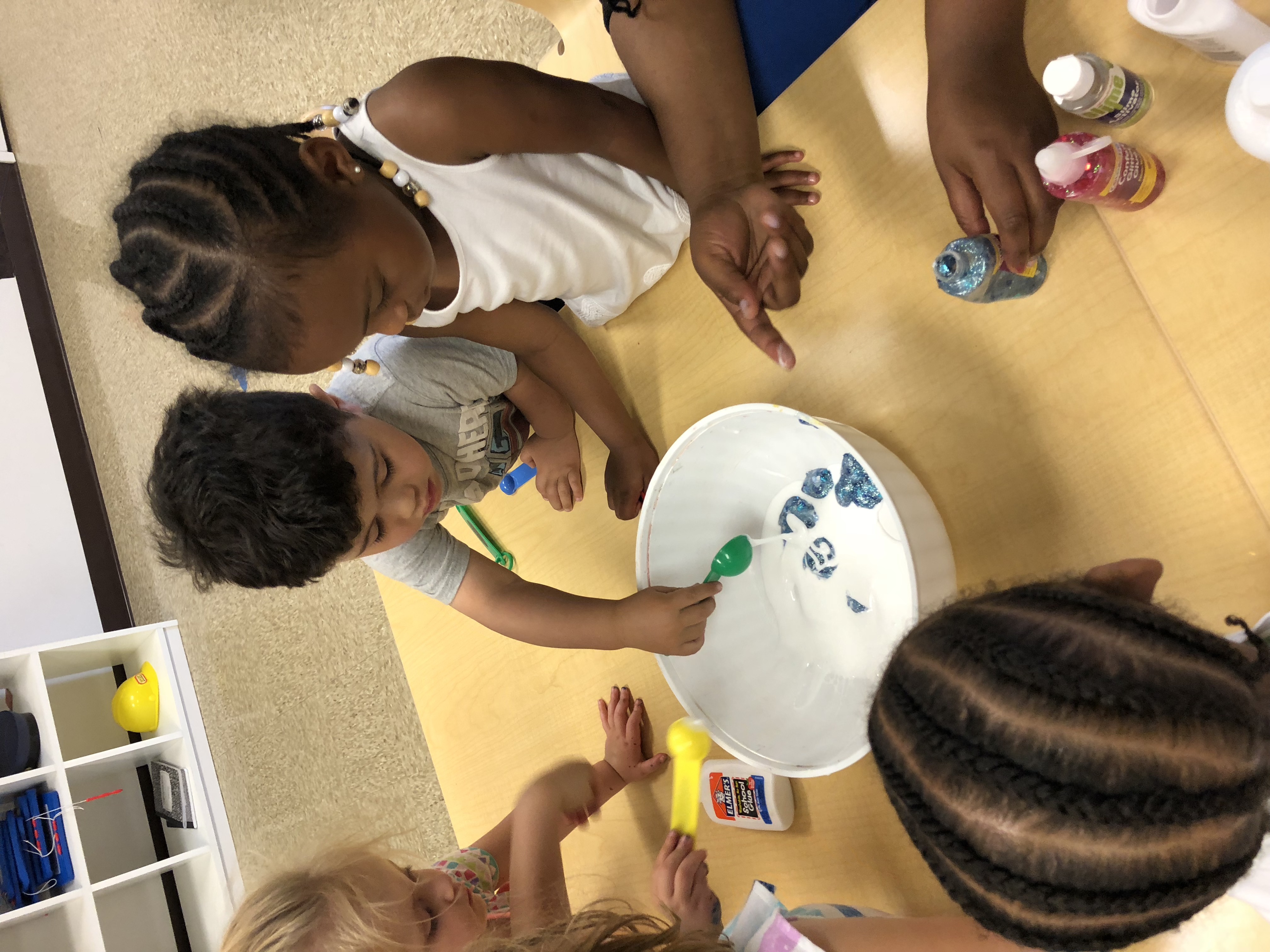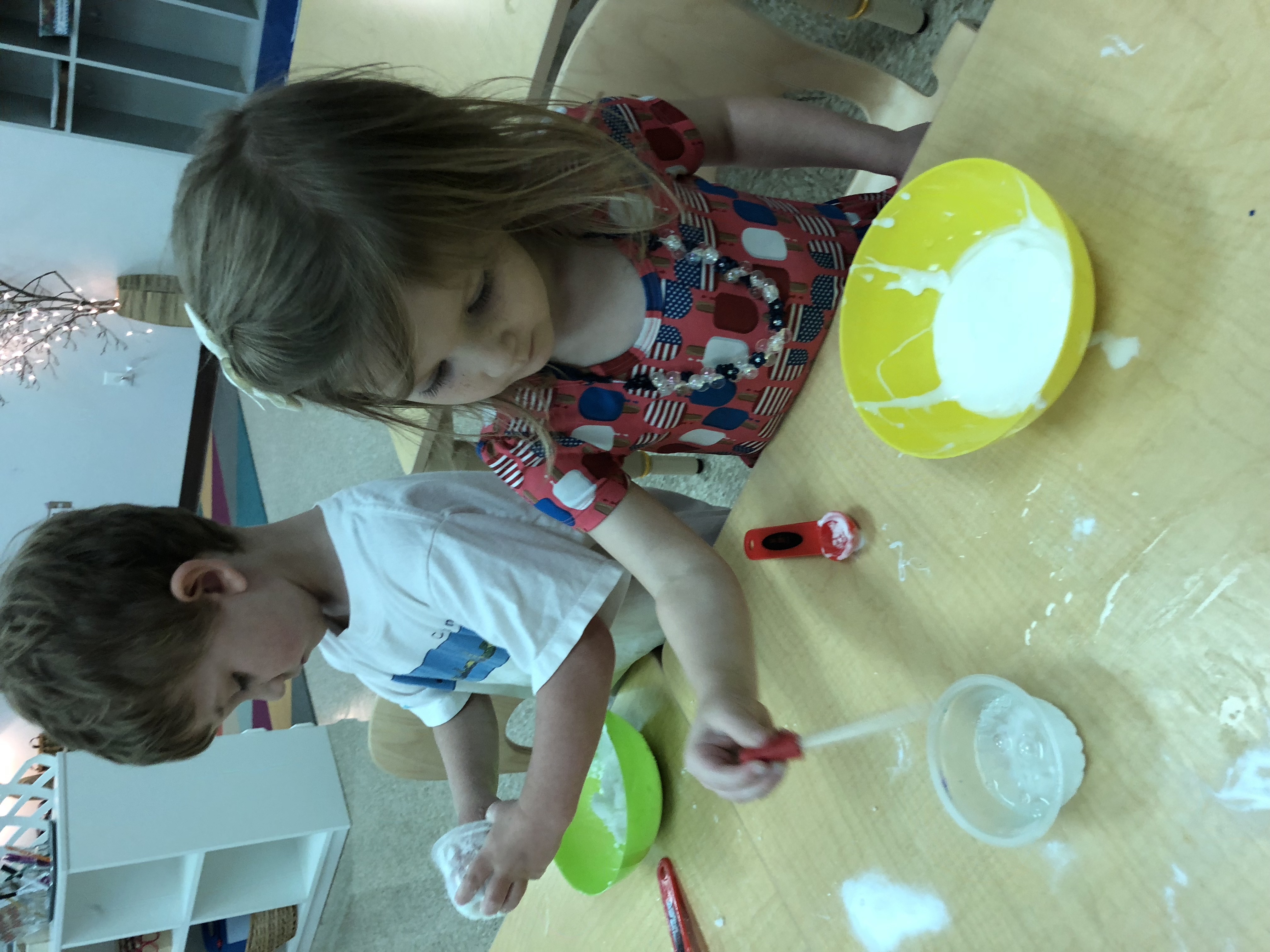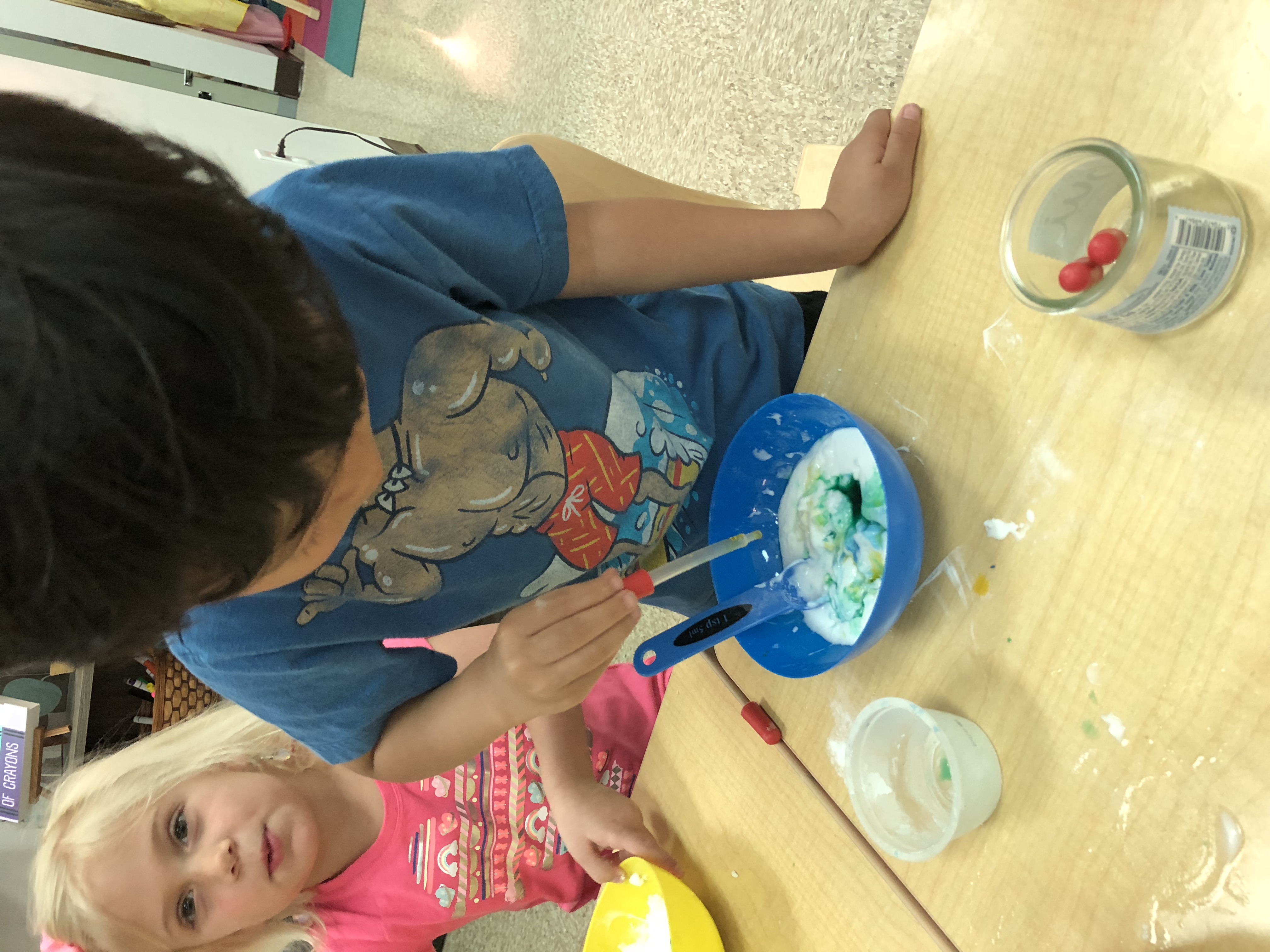A couple of weeks ago, Ms. Woods bought a slime-making kit to bring to school. The kit included premeasured ingredients that, when combined, would make a viscous slime for children to play with.
When we first offered the pre-made slime, the children were interested in “messing about” with the material. They manipulated it using their hands and fingers, as well as with tools. This experience provoked a great deal of language as the children described the sensation of the slime as they worked with it.

As we worked with the slime, we agreed that we needed more slime to use than what the pre-made kit contained. So how exactly could we make more slime? We posed the question to the children, who were eager to provide their thoughts.
Gwen– “You get a bowl and squeeze some glue in it. Then you put some blue color in it. Then you stir it around and around around!”
Lane– “You put the glue on paper and you mix it with playdough. Then it’s slime.”
Matthew– “You got to look on your iPad and look for Elmer’s. You have to use glue and glittery glue and a bowl to mix it up. You need water and a measuring cup.”

In small groups, we decided to mix up some home-made slime with the children using their recipes. As we added ingredients and continued to mix, I began to notice how fascinated the children were. They commented on what ingredients they thought should be added, rather than simply waiting for the slime to be done. They seemed more intrigued with the process rather than the final product.

To build on this interest, we offered a new provocation this morning during Projects & Play to allow the children to explore concepts of mixture and reaction. Each child was given the ingredients necessary to make the slime, however, they were allowed to combine the ingredients as they saw fit. As they worked, they made predictions and tested their theories about what would happen next.

Our work today led to an interesting discussion about properties of matter. The children noticed that mixtures still in a primarily liquid state were able to absorb color more thoroughly than mixtures that were more solid or gel-like. They also seemed to enjoy experimenting with changing their mixtures from liquid to solid through the addition of either baking soda or liquid borax solution. These interests will guide future activities as we continue to go deeper into our study.
